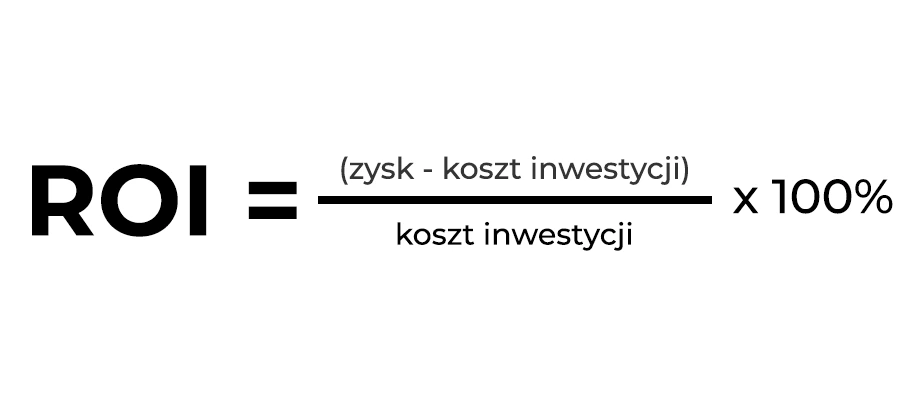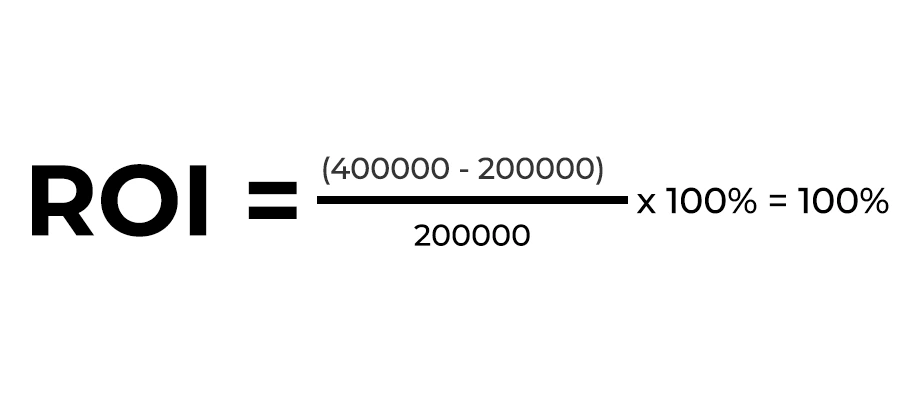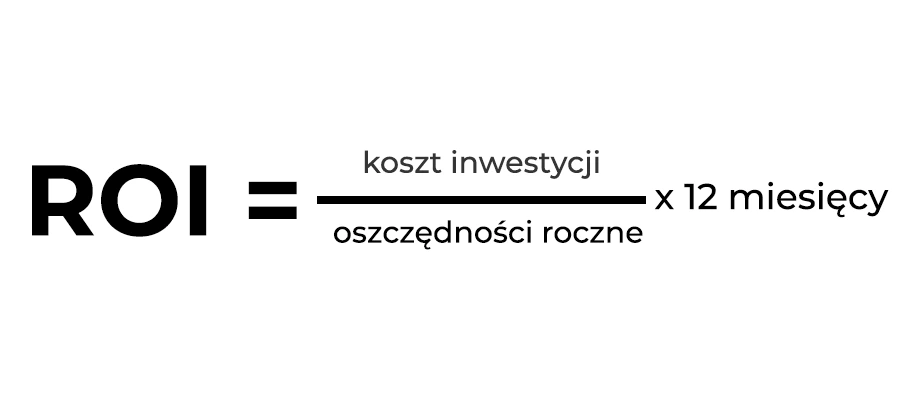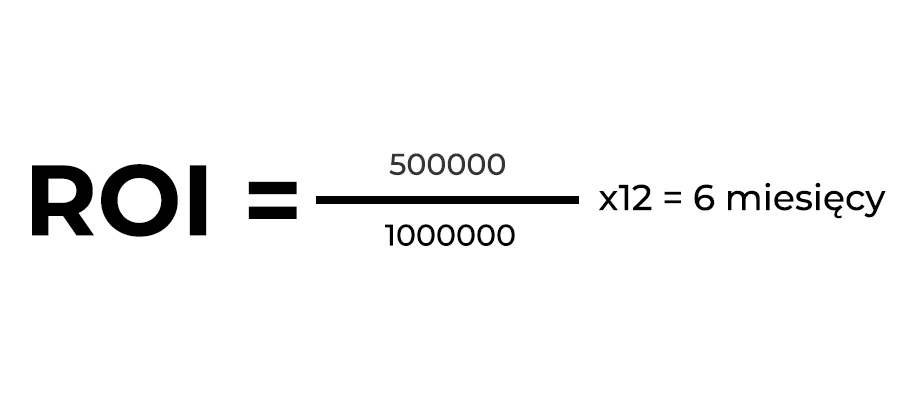
NEWSLETTER
Wpisz swój adres e-mail i zyskaj e-booka
Bez niechcianej poczty ani reklam
Tylko merytoryczne treści z obszaru digitalizacji produkcji

In the business world, investment is something inevitable. Companies are constantly looking for ways to increase efficiency, reduce costs and gain a competitive edge. But how do you assess whether a particular investment is actually paying off?
With help here comes the profitability index ROI (Return on Investment). It is one of the most commonly used ways to evaluate the profitability of a given investment. Although at first glance it sounds like another simple calculation, the reality is more complicated. Many companies make the mistake of looking only at the nominal value of the implementation, instead of analyzing the long-term benefits and savings.
A new IT system for one million zlotys? This may seem like a huge expense. But is it really? It all depends on what savings or additional revenue the investment will bring.

ROI (Return on Investment), or return on investment, is a parameter for assessing whether expenditures incurred bring tangible financial benefits. In the simplest terms, ROI determines how quickly an investment will begin to generate savings or additional revenue in relation to the costs incurred. This allows you to make informed decisions about implementing new technologies, automating processes or upgrading infrastructure.
Calculating ROI in practice is done in several ways, but the two most common approaches are:
1. percentage approach – determines how much percentage of profit the investment yielded in relation to the costs incurred. Used mainly in the analysis of marketing campaigns or sales activities.

The company invests 200K in an advertising campaign that generates 400K in revenue.

This means that every zloty invested brought a second zloty of profit, and the investment doubled in value.
2 Time approach – indicates after how many months or years the investment will begin to pay off. Often used in industry and IT, where it is crucial to estimate when the implemented solution will start generating real savings.

The company is implementing a PLN500,000 production management system that saves PLN1 million a year.

That is, the investment will pay off in six months, and from the seventh month it will start generating real savings.
On a daily basis, each of us makes purchasing decisions intuitively. When we enter a store, we quickly judge whether a product is expensive or cheap – we know the prices, we have experience and a reference point.
But what about when a company plans to implement an MES or ERP system for the first time? There are no previous transactions to compare, and there is often a lack of market familiarity, so assessing value becomes subjective. The lack of context means that decisions are often made under the influence of emotion or faulty assumptions.
It’s like the stock market. The price of a stock in isolation from a company’s financial data says nothing about its value. What matters is the analysis of indicators, trends, earnings and risks. The same in business – if we evaluate an investment only on the basis of its cost, and not on the basis of real, long-term savings and improvements, we risk making the wrong decision.
An example? The purchase of new production management software. If we look only at the cost – for example, 500 thousand zlotys – we may come to the conclusion that this is too big an expense. But if the system will reduce downtime, errors and improve efficiency, its real value will exceed the initial outlay.

ROI, as an indicator of profitability allows you to objectively assess whether an investment is paying off. In simple words – it shows when the investment will start earning for itself and how much you can actually profit from it.
Depending on the type of investment, the rate of return can be analyzed in different ways. Stock market investors look at financial ratios, manufacturing companies count operational savings, and marketers analyze sales growth after an advertising campaign.
But not all investments pay off at the same rate. Therefore, it is useful to divide them into three categories:
These are investments that produce immediate results and pay off quickly.
Examples:
These are projects that require more money, but provide long-term savings.
Examples:
These are projects of strategic importance that help the company achieve a market advantage.
Examples:

Problem: High losses due to faulty production organization – delays, downtime, documentation errors.
Solution: Implement an MES system that automatically monitors production processes, analyzes machine performance and reports problems in real time.
Effect:
– Reduce downtime by 25%
– Better control over production and reduction of errors
– Annual savings: 900 thousand zlotys.
– ROI: return on investment in 9 months
The decision? The investment proved to be a quick and profitable move, eliminating real losses.
The problem: Very high electricity costs – 700K per month.
Solution: Implement an EMS system to monitor and optimize energy consumption.
Effect:
– Reduction of energy consumption by 10% per month
– Annual savings: 840 thousand zlotys.
– ROI: return in less than six months
The conclusion? This type of investment is the easiest way to quickly reduce operating costs.

Investment in IT and digitization should not be treated as a cost, but as a tool to improve profitability and competitiveness. In order to make informed decisions, it is worth following a few principles:
1. don’t just look at the price – analyze the value the investment will bring to the company.
2 Calculate ROI, but also include “soft” benefits – better data quality, time savings, less risk of errors.
3. Hierarchize investments – start with those that pay off the fastest, and then move on to long-term projects.
4 Analyze overall costs – not only the purchase of the system, but also maintenance, integration and training.

An objective assessment of the profitability of an investment using ROI indicates when the costs incurred will begin to pay off. In practice, companies use two approaches to calculate it: percentage, which determines the profit-to-cost ratio, and time, which estimates after how many months the investment will yield savings. However, an effective ROI analysis requires taking into account not only implementation costs, but also maintenance and additional operational benefits. Informed investment decisions are based on real data, not on an intuitive assessment of nominal value.
Wondering if your technology investments are actually paying off? In the latest episode of Digitalizuj.pl I explain how to measure ROI, analyze real cases from the industry and show you how to make informed investment decisions.
And what does ROI analysis look like in your company? Do you make investment decisions based on data or intuition?